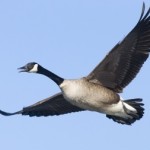 Birds vary in size as wide and ranging as deer, bear and small game. Using the wrong size ammo gauge could either blow your target to smithereens or cost you the kill all together. There is a very specific science for picking out the right shot size depending on what size waterfowl you are going after. This includes not only gauge, but also type of pellet or shot.
Birds vary in size as wide and ranging as deer, bear and small game. Using the wrong size ammo gauge could either blow your target to smithereens or cost you the kill all together. There is a very specific science for picking out the right shot size depending on what size waterfowl you are going after. This includes not only gauge, but also type of pellet or shot.
For small ducks, due to their quicker speed, small pellets are best. Combined with their erratic flight, smaller pellets allow the hunter to fill a wider pattern from choked gun. With a recoil of 35 foot pounds, just make sure you are within 30 yards of your target.
For larger Gadwalls, Wood Ducks, Wigeon and Scaup you want to move up to the more traditional bird shot in a 12 gauge. Loading with 3-inch loads of 1¼ ounces of No. 3s provides good pattern density. Effective at a greater range of 50 yards and slightly stronger recoil of 39 ft.-lb, targeting these heavier, less nimble birds should be a breeze with this all-around swatter load.
Moving into even larger small Geese, Mallards, Canvasbacks and Small Sea Ducks, your best bet is going to be the 12 ga., 3-in., 1,700 fps, 1¼ oz., No. 2. Still with a range of about 50 yards your going to want to watch out for the 52 foot pounds of recoil. Be sure to have your shot when shooting with this load because you are sure to clear out the bog with this high velocity, high decibel blast.
Finally, when targeting large geese and large sea ducks, you want to consider the 12 ga., 3-in., 1,635 fps, 1¼ oz., No. 1 steel pellets. Effective at 50 yards with a recoil 48 ft.-lb, they are priced a bit higher but most effective in bringing down tougher fowl which are often tough to get clean kills from.